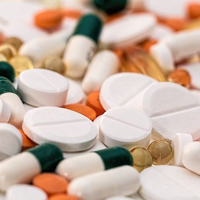Frequency of polypharmacy and drug interactions in inpatients in the emergency department, Southwest of Iran

Accepted: 5 February 2021
All claims expressed in this article are solely those of the authors and do not necessarily represent those of their affiliated organizations, or those of the publisher, the editors and the reviewers. Any product that may be evaluated in this article or claim that may be made by its manufacturer is not guaranteed or endorsed by the publisher.
Authors
This study aimed to evaluate the polypharmacy extent and the frequency and severity of drug interactions by evaluating inpatients in the emergency department. In this epidemiologicaldescriptive study, data were collected retrospectively by reviewing medical records of 92 hospitalized patients in the emergency department with a stay over 48 hours. Out of the study population, 54.3% and 45.7% were respectively male and female, with a mean age of 59.09. In terms of hospitalization, 27.2% and 16.3% were hospitalized due to heart problems and trauma, respectively and the mean length of hospitalization was 3.91 with a standard deviation of 2.57 days. The mean drug received was 8.48, with a standard deviation of 4.48. Of the patients, 81.5% received more than 5 drugs; in addition, the observed amounts of drug interactions of A, B, C, D, and X were 2.5%, 17%, 59.3%, 19.5%, and 1.9%, respectively. The drug interaction prevalence in inpatients in the emergency department was high. The presence of a pharmacist is necessary to identify drug interactions and reduce drug-therapy problems to provide quality services.
How to Cite
PAGEPress has chosen to apply the Creative Commons Attribution NonCommercial 4.0 International License (CC BY-NC 4.0) to all manuscripts to be published.

 https://doi.org/10.4081/ecj.2021.9082
https://doi.org/10.4081/ecj.2021.9082








